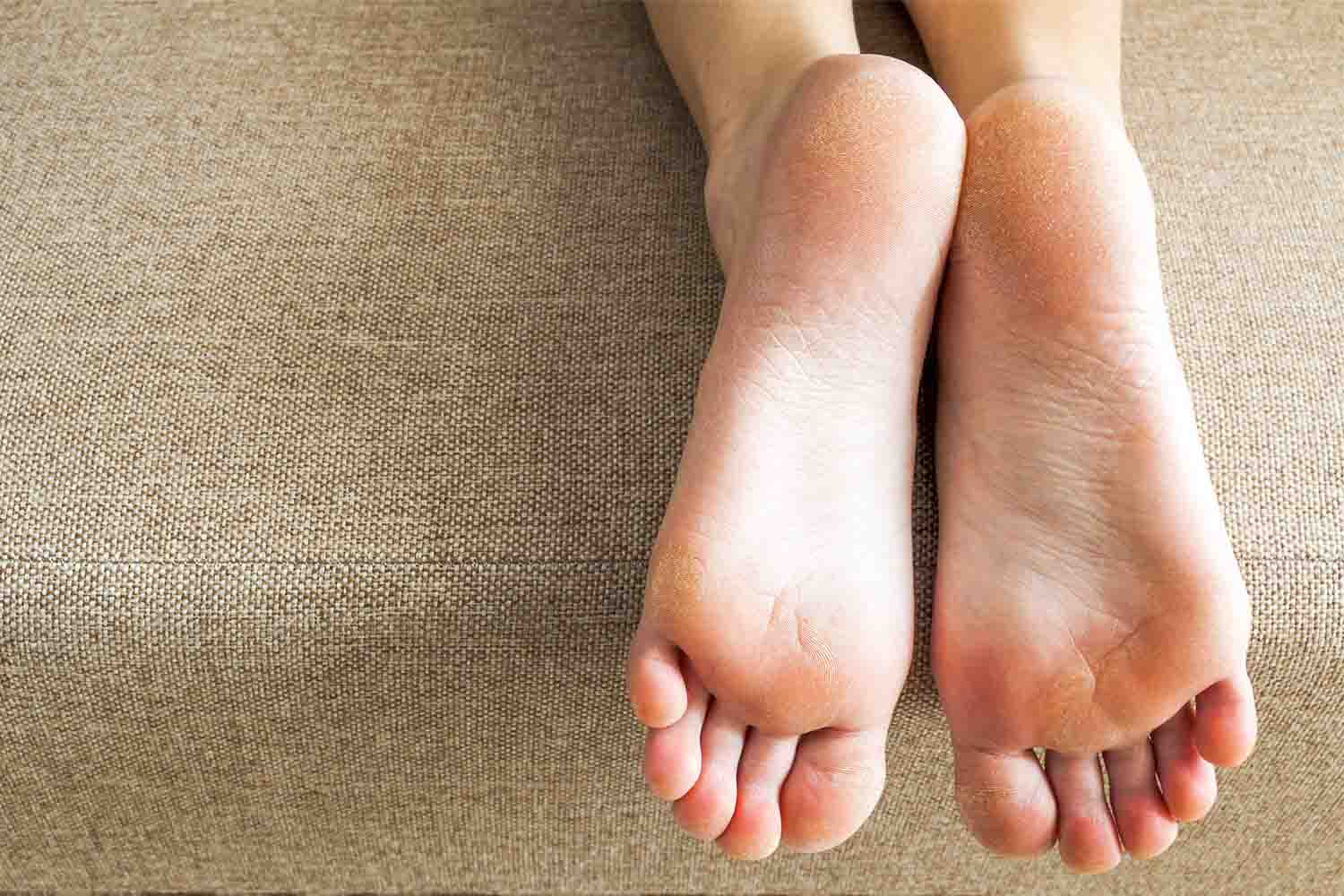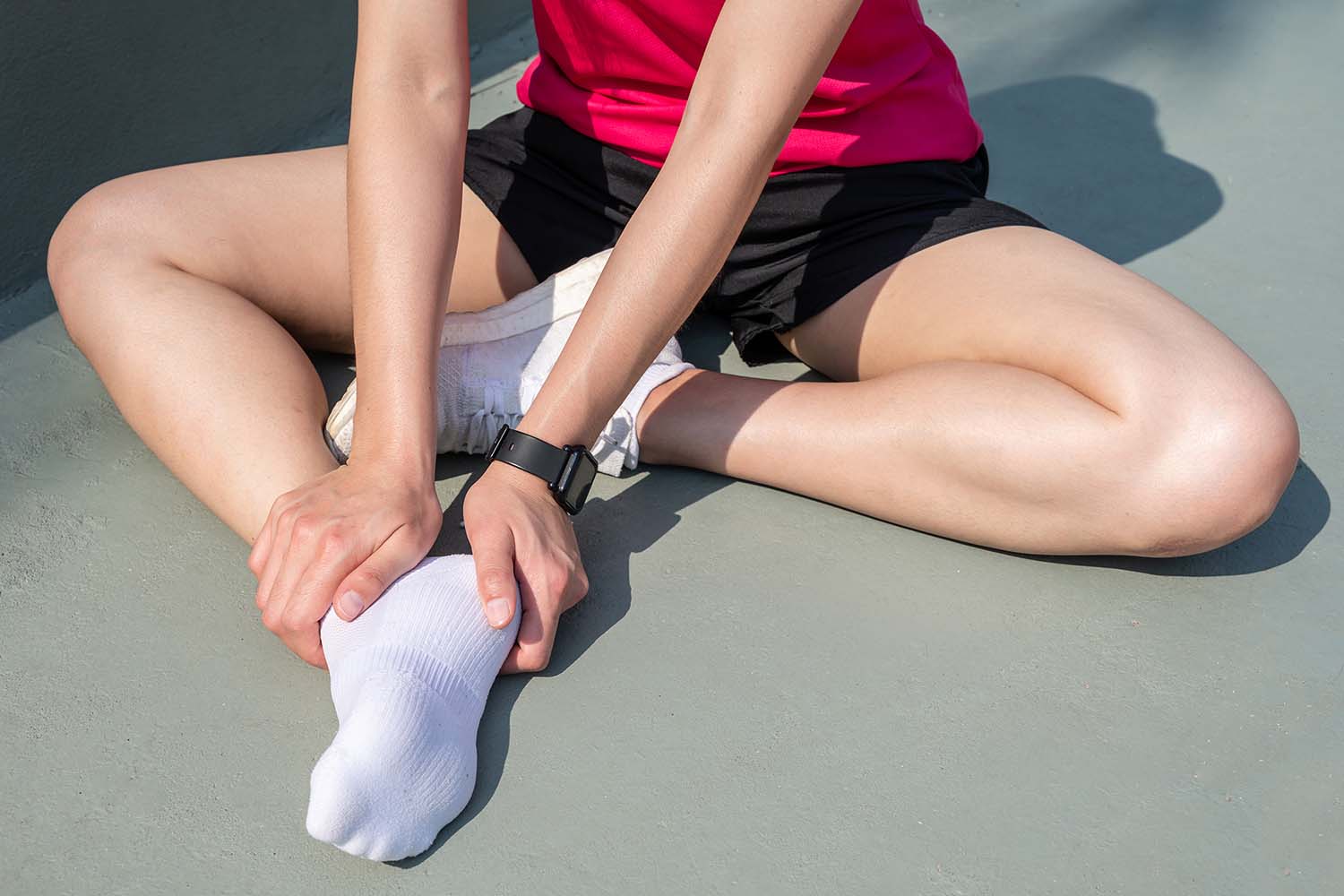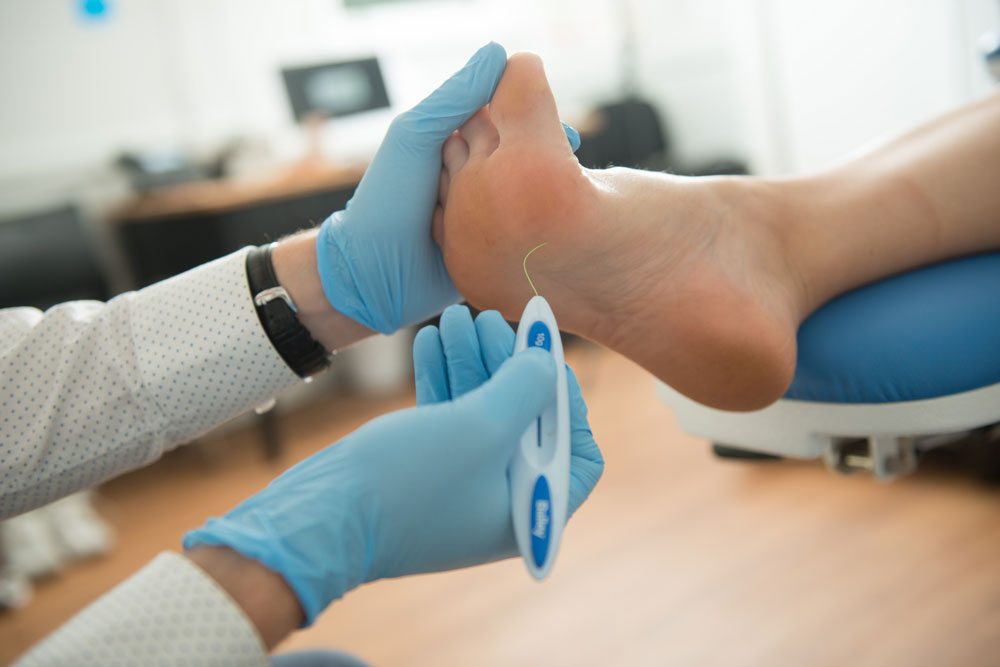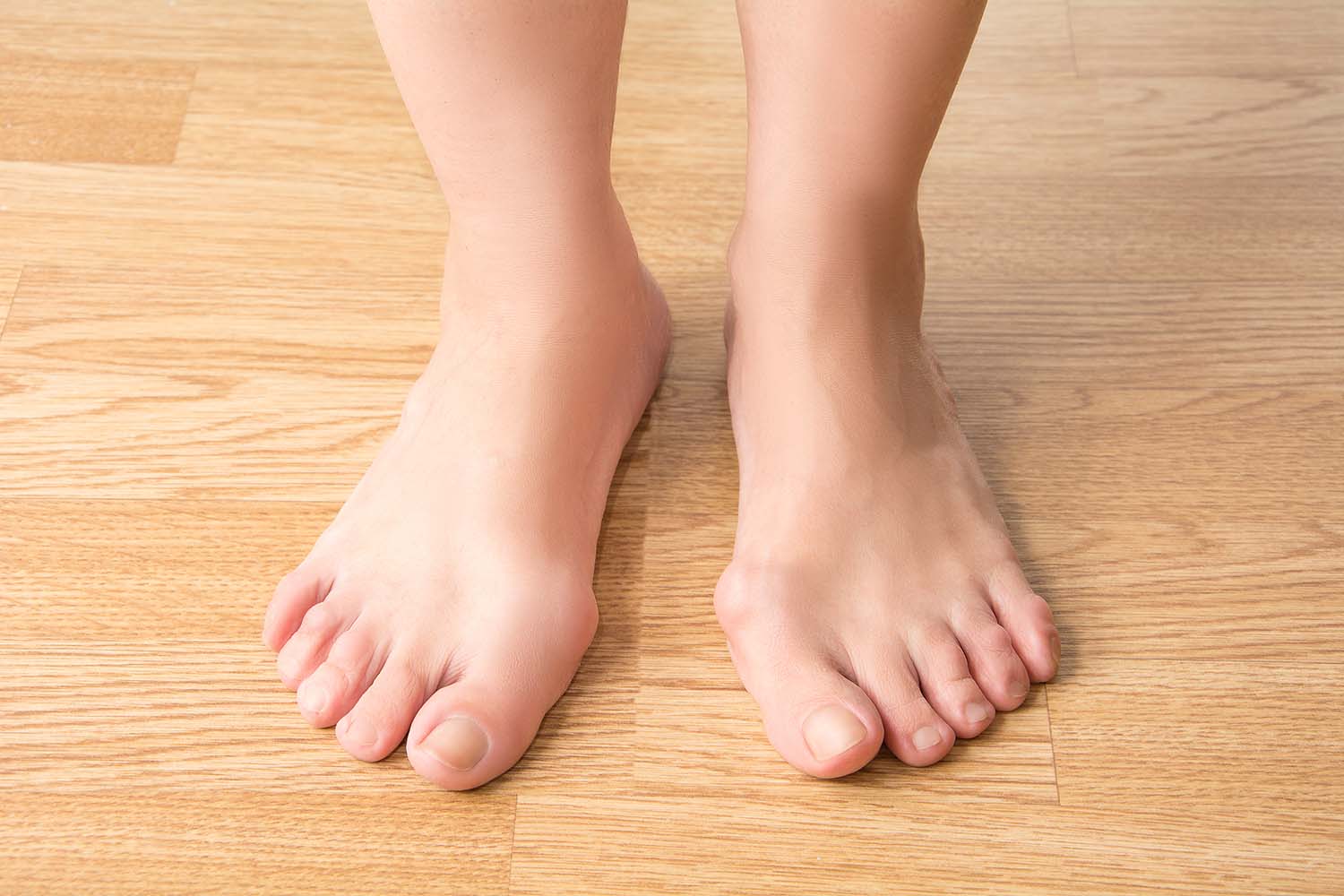Leg Length Discrepancy
Leg length discrepancy is caused by many different factors which can have widespread negative impacts for your body. So getting a professional and thorough assessment is super important. There are many reasons why someone may have one leg shorter than the other. As a result, our treatment for this condition will always be personalised for your precise circumstances.
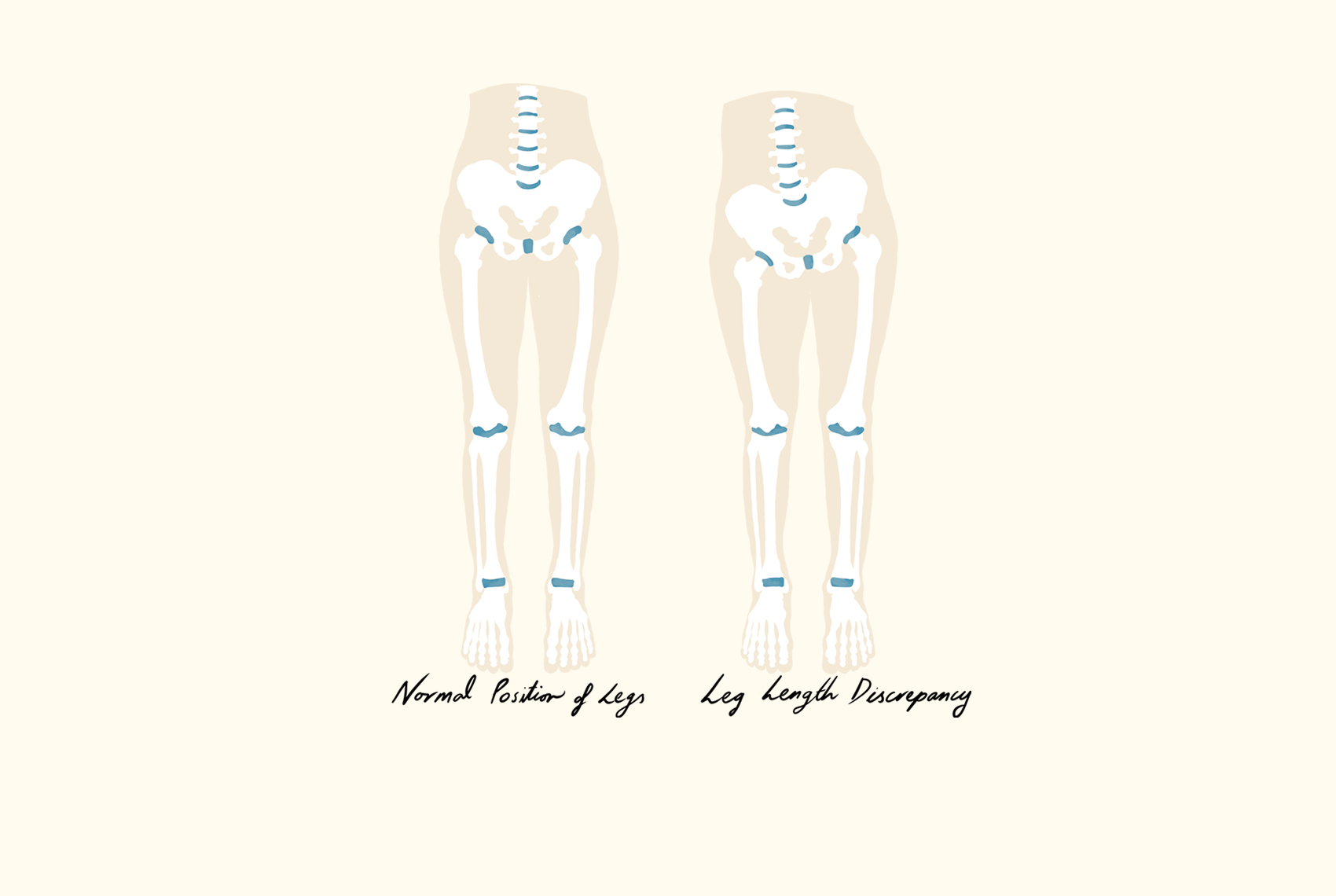
What is Leg Length Discrepancy?
Signs You May Have Leg Length Discrepancy
There are a couple of signs you might notice throughout the day which could indicate a leg length discrepancy. Here are some things you could check:
- Look in the mirror with both feet evenly on the floor. Observe whether your head tilts to one side, if one shoulder sits higher than the other or if one kneecap is situated higher than the other when your legs are straight.
- Look to see if clothing like skirts and trousers fall unevenly.
- Stand for a decent period of time. Check to see if you’re comfortable with your weight being evenly distributing across both feet, or if you constantly shift from one leg to the other.
- Assess your footwear and orthotics. Look to see if there is any uneven wearing down on one heel.
- Take a moment to connect to your body and how it feels to see if one side seems considerably tighter than the other. Additionally, you may notice that one of your thighs/legs is much stronger than the other.
Leg Length Discrepancy Symptoms
Put simply, when we walk, jog or run we move our weight from one leg to the other. This means we are constantly shifting our centre of gravity. With a leg length difference, the pressure applied to one leg may be substantially higher. This can lead to a wide array of typical leg length discrepancy symptoms including a limp, change in walking style (gait) and difficulty walking. It may even cause differences in feet, such as deformities in only one foot. This can result in the patient needing a different sized shoe for each foot.
People with leg length discrepancy often compensate with physical structural compromises to the body. This may include a person’s foot rolling in (pronation) on the same side as the longer leg in an attempt to make it shorter. Alternatively, a person’s foot may be held rigid and roll out (supination) on the same side as the shorter leg in an attempt to make it longer.
Leg length discrepancy can also have complex ramifications and cause debilitating symptoms such as back pain, hip pain, knee pain, foot pain and even headaches due to the decreased body symmetry. In addition, it can lead to general weakness, scoliosis, joint stiffness, nerve injury, joint dislocation, chronic pain and arthritis.
It is important to understand that leg length discrepancy symptoms are very unique to each person. Interestingly, the same size of variation in two people may have very different symptoms, if any. One person may experience severe discomfort while another may not present with any subsequent conditions due to having one leg shorter than the other
Symptoms of Leg Length Discrepancy Can Vary with Lifestyle
People who work in an environment where they are required to walk extensively and carry heavy loads are more sensitive to even minor discrepancies in leg length than someone who spends most of their time sitting. Athletes with minor leg length discrepancies are commonly treated to prevent or reduce symptoms and ensure their body functions with optimal symmetry to minimise unnecessary energy expenditure and increase muscular efficiency.
What Causes Leg Length Discrepancy?
There are three types of leg length discrepancy:
Structural
A structural leg length discrepancy occurs when either the thigh bone (femur) or shin bone (tibia) in one leg is physically shorter than the same bone in the opposing leg. This anatomical difference can be a developmental abnormality found at birth or childhood. Alternatively, it can be acquired later in life due to trauma, a fracture, bone tumours, orthopedic degenerative diseases, osteomyelitis and even surgical complications in instances like joint replacement. Often children experience structural differences when they break a leg bone as sometimes a broken bone grows faster for a few years after healing.
Functional
A functional leg length discrepancy occurs when all the bone lengths are equal, however, there is an asymmetry because of issues in the foot, ankle, hip and/or pelvis. It can be caused by an alteration of lower limb mechanics, such as joint contracture, static or dynamic mechanical axis malalignment, muscle weakness, or shortening. This functional discrepancy can also develop due to an abnormal motion of the foot, ankle, knee or hip in any of the three planes of motion.
Environmental
An environmental leg length discrepancy can often eventuate from uneven surfaces. One example could be the unevenness caused by walking, jogging or running on crowned roads or nature tracks. Additionally, excessive uneven asymmetrical shoe wear and tear may also lead to or exacerbate existing leg length discrepancy. This last note highlights the importance of replacing footwear at least annually depending on the amount of wear. Often people assess the upper visible part of the shoe to determine if a new pair is required, however, assessing the integrity of the shoes’ cushioning, support and the soles’ wear patterns are far more important for happy feat. Environmental leg length discrepancy can exist independently or be a compounding factor on top of existing structural or functional leg length discrepancy.
Professionally Testing for Leg Length Discrepancy
From reading this article, it becomes abundantly clear that leg length discrepancy is quite a complex and nuanced condition. As a result, assessment requires an experienced podiatrist or medical professional to properly determine whether the discrepancy is due to structural, functional and/or environmental factors. There are various forms of assessment used to properly test for and diagnose leg length discrepancy:
History and Physical Examination
Initially a comprehensive overview is conducted. This can include discussing your general health, symptoms, known hereditary factors, daily activities impacting the body and medical history. This also includes completing a physical examination which observes how you sit, stand, move and walk.
At Northern Rivers Podiatry we provide state-of-the-art biomechanical assessment with the aid of video gait analysis and 3D foot scanning. This computer assisted gait analysis and foot scanning offers a non-invasive and reliable clinical method to assist in properly identifying functional asymmetry.
Diagnostic Imaging
At our Byron Bay podiatrist clinic we can refer our patients for diagnostic imaging and interpret the findings. An x-ray will provide an image of dense structures like the skeletal system and provide a more exact measurement of structural leg length discrepancy. In addition, a scanogram is a specialised x-ray which uses a sequence of three images and a ruler to measure the length of the tibia and femur. Computerised tomography (CT) scans provide a detailed image of the soft tissue and bone within the legs. It is often a single image from the pelvis to feet and is highly accurate.
Measuring Limb Length with Tape
Our podiatrists understand the limitations of using a tape measure to physically measure the difference in leg length. While we are highly skilled with a tape measure, measuring the length from hip to ankle is not precise and does not ascertain if there is any functional difference. For this reason, this technique is only advised when used in conjunction with other clinically approved methods.
Raising One Heel
By adding blocks underneath one foot incrementally, a trained podiatrist can monitor at which stage the hips become level. This method has its limitations though. While it serves the function of confirming where there is a leg length discrepancy present, it alone cannot determine the cause of the difference.
Specialised Leg Length Discrepancy Treatment from your local Byron Bay podiatrist
As you can see, leg length discrepancy can eventuate in a myriad of different ways. This complex condition can have widespread negative repercussions for the body and conducting professional, informed and comprehensive assessment is critical. Treatment for this condition will always be precisely personalised for each patient depending on their unique circumstances and the severity of the case.
One thing is for sure, anybody who suspects that they have one leg longer than the other would be highly recommended to have their feet professionally assessed by a podiatrist. Many have ignored quite substantial differences in leg length as at the time they were asymptomatic. It’s vital to understand that preventative and corrective measures can support overall health and function to avoid unnecessary future lower limb related issues.
At Northern Rivers Podiatry we’ll work with expert care and detail to properly assess and treat leg length discrepancy. Our world class treatment includes, but is not limited to:
- Heel lifts
- Orthotic therapy
- Excellent footwear advice
- Discrete shoe modifications
- Physical therapy
- Exercise and stretching routines
- Referral to other allied health professionals or specialists
- Imaging for further evaluation if necessary
- Recommendations and consultation of potential surgery in severe cases
Leg length discrepancy is an extremely important condition to be aware of due to the large area of the body it impacts. So, if you want to feel more balanced, take preventative action or treat secondary symptoms due to leg length discrepancy then book an appointment with one of our experienced Byron Bay podiatrists. We’re passionate about you feeling sure footed so you can engage with life to the fullest and will support you through proper diagnosis and treatment.
Contact Us
"*" indicates required fields
